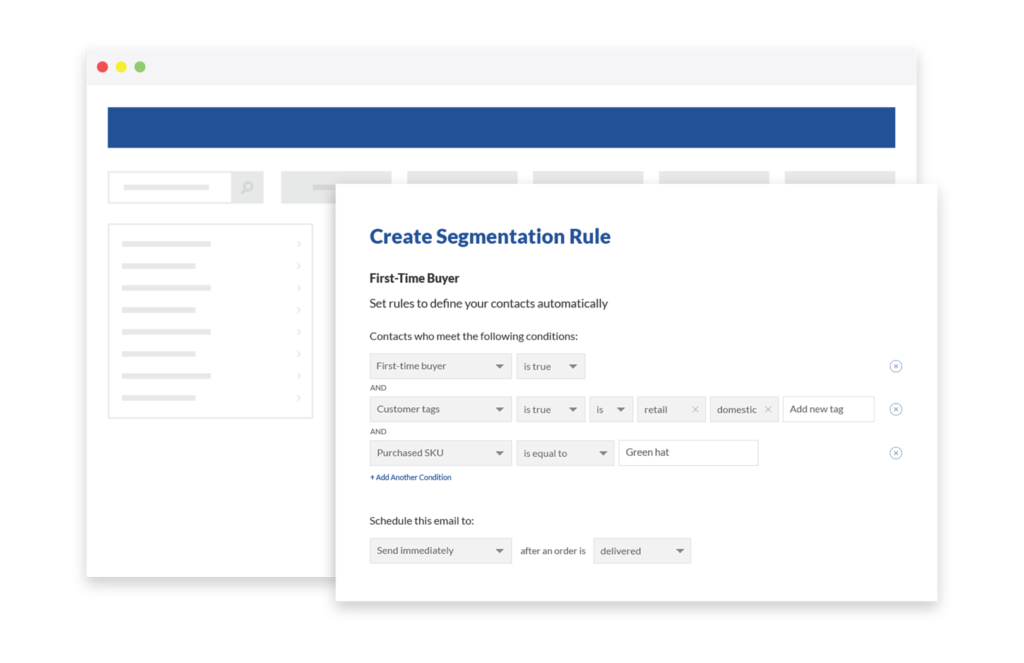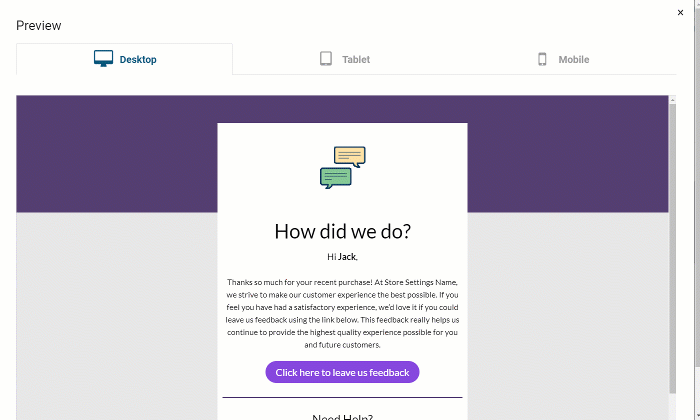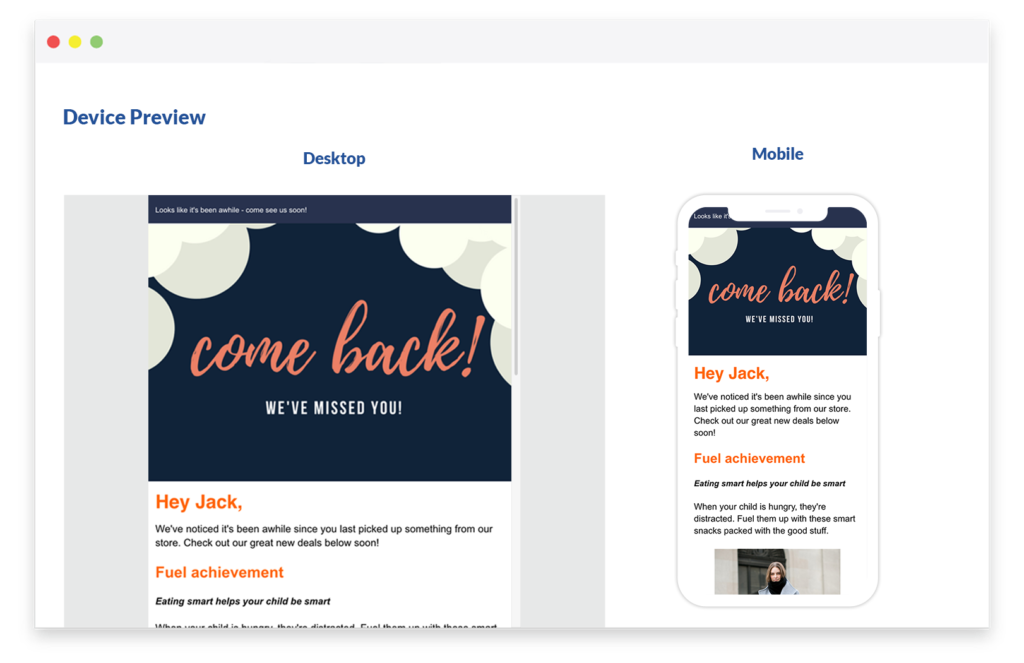Did you know that email marketing is one of the most effective marketing channels you can use? In fact, if done correctly, you could receive a return of up to $43 for every $1 you spend. That’s huge! Email marketing is the most cost-effective way companies promote their products, communicate with customers, and achieve business objectives and goals. One thing you need to know—while tactics play a huge role, it’s the strategy that gets the ROI. Email marketing campaigns outperform every other online marketing strategy, including PPC, SEO and content marketing. Here are a few email marketing best practices to help create top performing campaigns that work:
Personalization
One of the primary ways to create top performing email marketing campaigns is by personalizing your messages. That means you need to make sure your customers know you care about THEM. This is where your customer and order data play a big role because you’re creating a personalized customer experience. Start by using their name instead of a generic opening, which is basically email table stakes at this point. Personalized email messages deliver 6X higher transaction rates. Although this is highly recommended, about 70% of today’s brands do not use personalization, which gives you an advantage. Subject lines with personalization get open rates that are about 16% higher.
To maximize personalization, use the data that is right at your fingertips. You already know so much about your customers’ preferences, behavior, tenure as a customer, and more, all from your order data. We touch on that a bit more below. On a final note, be sure you have a real reply-to email address (rather than a [email protected]), and possibly a real email signature.
Segmentation
Segmenting your audience is key to give relevant messages to the right audience. Sending emails that feel like they don’t apply to your individual customers can make it seem as if you aren’t connecting with your audience. A study done by HubSpot revealed that when a company segments their email list, all key email marketing KPIs perform better, and result in increased performance. This includes leads, open rates, transactions, and revenue.
When deciding to segment your customers, think about their shopping behavior.
- How often have they shopped?
- How much have they spent?
- Who are your first-time buyers? Your VIPs?
- Who could benefit from product recommendations based on their previous purchases?
- Who is more likely to take action and write you a glowing review?
These considerations will allow you to segment your audience into groups who your messaging will most resonate with.

Get mobile friendly
The number of emails that are opened on mobile devices is about 61% or higher, depending on the study. In fact, most people (62%) look at their phone as soon as they wake up in the morning. With a figure that high, not having a mobile responsive email structure in place can really hurt. What do you think happens to an email that doesn’t conform to the device? Of course—the person will unsubscribe or delete it.
According to Yesmail, the average revenue per mobile email is $0.40 – 4X that of a desktop email, and 55% of smartphone users have made a purchase via their mobile device after getting a promotional email. If you’re not adding this to your email marketing mix, you’re definitely losing money.
Here are a few things you can do:
- Keep subject lines and pre-headers short.
- You already know how important the subject line is, but the pre-header text (preview text that shows up next to the subject line) is also key. Use a call to action in this area or summarize the email.
- Use responsive email design (RED)
- This type of email design will ensure your users have an optimal experience across all their devices.
- Make the CTA prominent
- Your call to action should be able to be seen across all devices so it needs to be big and legible. This is crucial in e-commerce. You also need to make it easily tappable with button sizes that can range from 37 px to 44 px.
- Test your elements
- There are many tools out there to check mobile compatibility, but many email marketing solutions should offer a preview of what you can expect (ShippingEasy’s Customer Marketing tool shows previews for desktop, mobile phone, and tablet)

Automation
If you haven’t started automating your email sequence, now’s the time to start. Automated emails are based on user behavior and keep your audience engaged. Think welcome, thank you, review request, and other transactional emails. Trigger emails are not only important but have open rates as high as 49%. Also, the click-through rate (CTR) more than doubles when compared to traditional rates. According to Forrester Research, trigger-based email marketing campaigns can generate 18x more profits and 4x more revenue.
Why do these perform so well?
Think context. If you’re a subscriber and you get an email for something very relevant, such as an abandoned cart email reminding you of something you left in your cart within that same hour. If there were a 10% discount or free shipping code attached to it, wouldn’t you think twice? Some really cool trigger-based emails that work could be:
Win-back email marketing campaigns
This type of email uses purchase history data to try and keep a customer from leaving forever. At a predetermined period of time, an email fires off with a special offer, a simple reminder, or a “buy it again” message. Ideally, this will reactivate your customer’s interest and keep them from lapsing completely.

Product recommendations and reviews
Customer purchase history can be a powerful driver of repeat business. By using what they’ve bought in the past, you can recommend complimentary items, similar items, or popular products from your catalog. Also, as you probably know, reviews reign supreme online. Encouraging customers to rate their experience with you as a seller or a particular product can establish a precedent for other shoppers considering a purchase. Just be sure you’re working to maintain your reputation and are responding to reviews you receive.
Surprise
People love surprises and “free” stuff. Surprising your loyal customers from time to time just to say thank you is ratings gold. This customer segment is easily discoverable in your data. Filter by customers who have the longest history with you or have spent above a certain dollar amount with you. Label these as your VIP customers and reward them for their patronage, hopefully encouraging them to stay around and continue their relationship with your business.
These tips are just a few ways to keep customers engaged while delivering the results you want. The days of sending a one and done email are gone—customers want personal engagement. Remove all the guesswork with ShippingEasy’s Customer Marketing solution to create targeted, personalized, top performing email marketing campaigns that add value and quantifiable results to the bottom line.
Rob Zaleski
Latest posts by Rob Zaleski (see all)
- USPS 2023 Shipping Rate Changes - November 16, 2023
